ENGLAND
Plants and Animals

Plants and Animals

Cities in ENGLAND
| Birmingham | Liverpool | London |
| Manchester |
Popular destinations UNITED KINGDOM
| England | Northern ireland | Scotland |
| Wales |
Plants and Animals
Plants
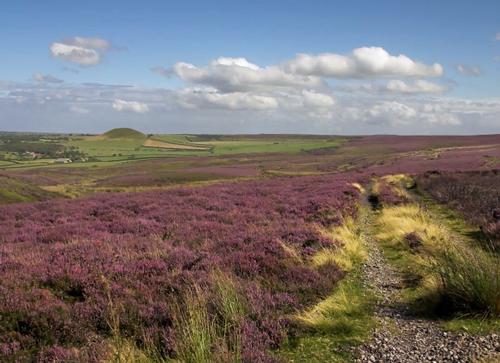 Heath on the North York MoorsPhoto: Colin Grice in the public domain
Heath on the North York MoorsPhoto: Colin Grice in the public domain
About 7,000 to 5,000 years ago, birch and pine forests covered England. In 1919, only 4% of the total area of England was covered by forests. Due to good management of existing forests and a replanting program, the total amount of forest land had risen again to 10% in the mid-1990s.
Pieces of deciduous forest can still be found in the lowlands, especially on the often very extensive estates. Much of North West and South West England is covered with heather, with wooded hills (especially conifers) and valleys in between, cultivated for agriculture.
The lowlands of southern England are mainly used for agriculture and the wooded appearance of some counties is largely apparent, as it is caused by rows of trees that are used as partitions and undergrowth. Oak and elm mainly occur on the fertile clay soil of the lowlands; beech and larch are among the few trees that grow on the limestone soils.
Animals
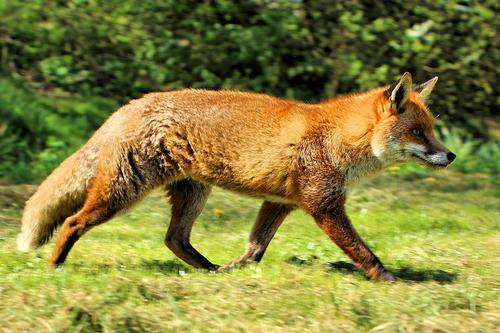 Fox EnglandPhoto: Airwolfhound CC 2.0 Generic no changes made
Fox EnglandPhoto: Airwolfhound CC 2.0 Generic no changes made
The animal world of England is not very rich in species. Large mammals such as red deer and roe deer are distributed locally and the fallow deer introduced in Roman times is quite widespread. This also applies to fox, tie and otter, although the latter is not so common anymore. The deer was extinct, reintroduced 200 years ago and is currently the most common deer species in England. The sika deer was introduced in the 17th century. Wild mint yaks and Chinese water deer are descendants of escaped species. Other special appearances include wild goats in the Lake District, the semi-wild ponies of the New Forest and Dartmoor, wild boars in the southeast and a very strange sight: Bennett wallabies (Tasmanian subspecies of the red-necked wallaby of mainland Australia) in the Peak District. The pine marten is found in some places.
Typical for England are badgers, foxes, dormice, hedgehogs, bats. The gray squirrel, one of the most common "wild" animals, actually comes from North America, and has almost supplanted the native red squirrel. The brown and gray hare are also native, but the rabbit was introduced during Norman times. Rabbits, but also mice, voles and shrews are hunted by ermines and weasels. Water rats, otters and the mink live in streams and rivers.
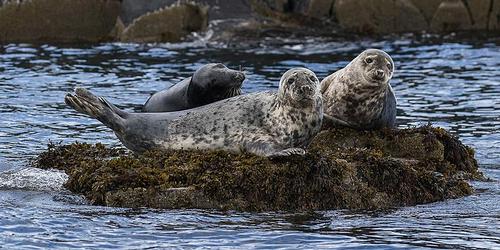 Grey Seals EnglandPhoto: Francesco Veronesi CC 2.0 Generic no changes made
Grey Seals EnglandPhoto: Francesco Veronesi CC 2.0 Generic no changes made
Off the coast, harbor seals and gray seals, porpoises and dolphins can still be seen incidentally near the coast. There is a zoological reserve in the Farne Islands, including for the gray seal and a large number of seabird species. There are many, mostly small, bird sanctuaries and one of the best known is the Orfordness-Havergate Reserve on the South East coast of England. There are about 130 bird species in England, but they are struggling due to progressive urbanization. For example, there are only three million blackbird pairs left. Seabirds such as gannets, gulls, Northern petrels and cormorant are less sensitive to this. Other birds, such as the crossbill, the wood warbler and the nightingale, which only occurs in southern England, have adapted to their changing environment.
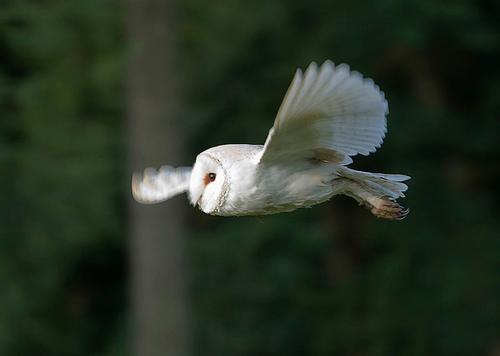 Barn Owl EnglndPhoto:Edd deane CC 2.0 Generic no changes made
Barn Owl EnglndPhoto:Edd deane CC 2.0 Generic no changes made
Typical species such as the rook, the bovine, the bunting, the barn owl, the pheasant live on and around agricultural lands and since 1955 the Turkish turtledove has nested on English soil. Birds of prey like the golden eagle, the red kite and even the buzzard struggle to survive by taking prey.
Migrants and hibernators include house martins, swifts, sand martins, cuckoos and chiffchaffs. Arctic regions include brent goose, barnacle goose, whooper swan, little swan, gray plover, oystercatcher, curlew and kingfisher. Among the birds are some of the continental aberrant geographic shapes, including the English white wagtail and the bullfinch.
The only poisonous snake is the viper. Furthermore, the grass snake and the smooth snake occur, the latter is seriously threatened. This also applies to the sand lizard, the common lizard does better. The natterjack toad and the common toad also have a hard time; the salamander can often be seen in the spring.
Salmon and trout are found in many rivers and streams. The sea is rich in fish species, especially on the rocky coasts.
More than 3000 beetle species live in England, the cockchafer and the flying deer are most common. Butterflies such as the peacock-eye, fathead, blue, fritillary and page find their favorite habitats all over England.
Protected natural areas
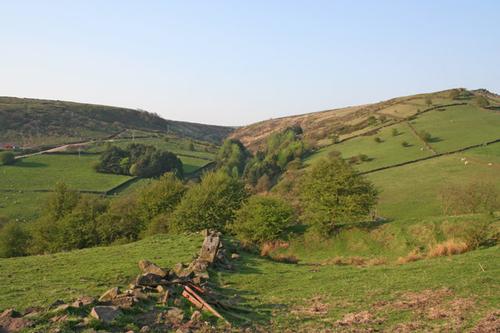 Peak District National Park EnglandPhoto: Kate Jewell CC 2.0 Generic no changes made
Peak District National Park EnglandPhoto: Kate Jewell CC 2.0 Generic no changes made
A large number of areas in England have protected status. National Parks, Areas of Oustanding Natural Beauty (AONB) and Sites of Special Scientific Interest (SSSI) are distinguished. In 1951, the Peak District became the first area in England to become National Park status. Ten more were added after that. In 2001, two areas in England and Scotland were nominated for National Park status.
The problem is that the protected areas attract many thousands of visitors every year, making it difficult to find a good balance between tourism on the one hand and protection of nature on the other.
In addition to the national parks, there are about a hundred state nature reserves, as well as wildlife, waterfowl and forest reserves and a fairly large number of private reserves.
| National parks | Area |
| The Peak District | 1438 km2 |
| Lake District | 2292 km2 |
| North York Moors | 1432 km2 |
| Yorkshire Dales | 1769 km2 |
| Exmoor | 693 km2 |
| Northumberland | 1049 km2 |
| Dartmoor | 954 km2 |
| The Broads | 303 km2 |
Sources
Allport, A. / England
Chelsea House
Bowden, R. / Groot-Brittannië
Corona
Engeland, Wales
Lannoo
England
Lonely Planet
England
Rough Guides
Fuller, B. / Britain
Marshall Cavendish
Groot-Brittannië
Michelin Reisuitgaven
Locke, T. / Engeland
Van Reemst
Parsons, F.S. / Engeland
Van Reemst,
Schaedtler, K. / Highlights van Engeland en Wales
Gottmer
Somerville, C. / Groot-Brittannië
Kosmos-Z&K
CIA - World Factbook
BBC - Country Profiles
Last updated September 2024Copyright: Team The World of Info